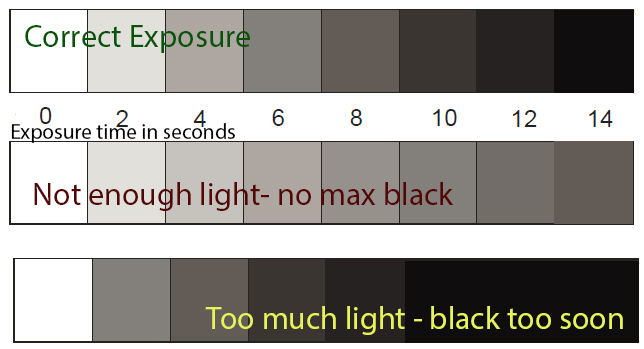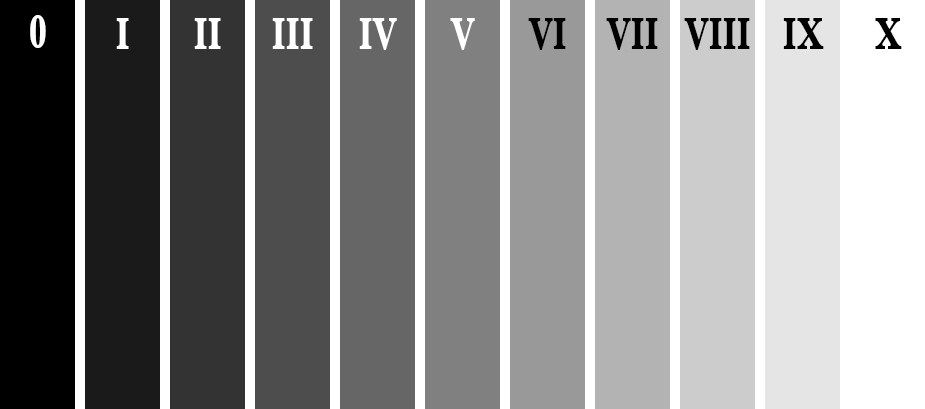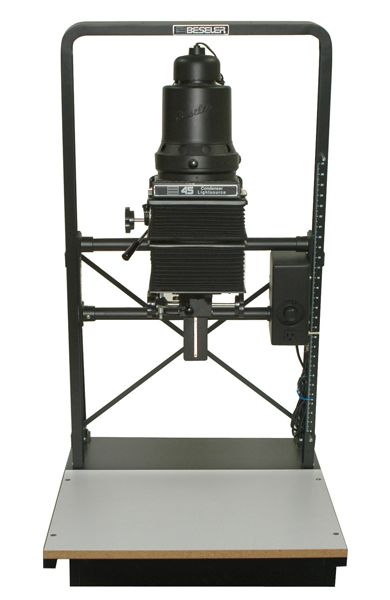PHOTOGRAM LINKS
Exposure and Grayscale
Tones from black to white are building blocks of photographic images.
Photographic paper is coated with a thin emulsion
of silver that is sensitive to light.
If it is exposed to light and treated with developing
solution, the paper will go solid black.
Changing the amount of light (exposure) by intensity or time can create in between shades of gray. This is the basis of photographic printing.
Negatives made in a camera are used to make
"continuous toned photographs" usually consisting of
Black, White and various shades of Gray.
Setting up the Enlarger
Timer-
set to 2 seconds
Lens:
check the focal length-
50mm, 90mm, 135mm
Carrier:
choose carried that is correct for lens

Test Strips
Using an enlarger as a light source to control light and time to create a grayscale.
Put a strip of paper on the baseboard - emulsion side up.
Cover about 1/2" with cardboard
Expose for "One Hit" of 2 seconds.
Move the cardboard tyo cover another 1/2"
expose for another hit.
Repeat so you have at least 6 hits and cover the whole strip.

Minimum Time ----
Maximum Black
Develop the teststrip and evaluate.
See where you have Maximum black.
If you have at least 5 hits you can use this number to expose your photogram.
For Photogram:
Place paper on Baseboard - emulsion side up.
Arrange objects for photogram
Expose for the number of hits that reached maximum black.
Move objects between hits to create gray areas, overlapping, illusion of motion.

